What Is Consignee And Consignor In Shipping?
Among the most commonly used terms in shipping are the two: consignee and consignor.
While these two may be generally seen as ‘the one who receives’ and ‘the one who sends’ there is more to it.
The terms consignor and consignee relates to shipments by land, sea, or air.
Let us take a look at how they are used specifically in shipping.
The party that sends goods to its customer is called the consignor. The customer who receives the goods as in this case is the consignee.
The consignor is not to be confused with the carrier that delivers the goods to the consignee.
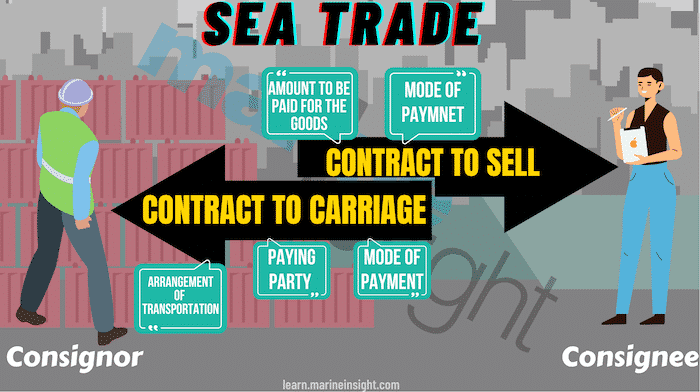
Shipping terms must be used carefully while preparing shipping documents.
Maritime fraud is something that makes use of poorly worded shipping documents. It can also lead to disputes and litigations that can drag on, causing losses to the parties in the dispute.
A typical shipping document in which one comes across these two terms is the bill of lading.
Bill of Lading
A bill of lading is a negotiable instrument that is issued by the shipping company to its customer as an acknowledgement of receipt of goods for transport.
It is a contract between the shipping company and the customer to transport the customer’s goods from point A to point B in a sailing vessel of the shipping company. Here, the customer of the shipping company will be the consignor.
This contract is bound by terms and conditions that are shown on the bill of lading. The bill of lading shows the names of all those who are party to the transfer of goods such as the consignor, the carrier, the consignee, notify party, etc.
The shipping company’s customer who has entrusted it with the job of transporting goods, covered under the bill of lading is the consignor.
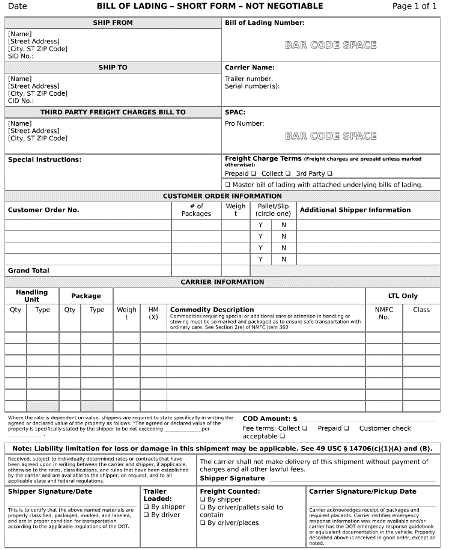
The consignor would have sold the goods to his customer who may be the recipient at the destination port. Shipments could also be intra-company transfers from one location to another.
When a company transfers goods from one of its branches to another, that becomes an intra-company transfer.
Once the goods reach their destination port, the shipping company has to hand it over to the consignor’s customer, the customer’s appointed agent, or the consignor’s appointed agent.
However, these parties should have completed the clearance formalities such as payment of customs duties and taxes.
The party that will have the ultimate ownership of goods is the consignee here. The others merely act on behalf of the consignee to receive and move the goods to their final location.
A notify party is usually the consignee, a clearing agent, or a third party. The notify party is informed by the ocean carrier, upon arrival of the goods at destination, for the party to take necessary actions such as clearance, delivery to the customer, etc.
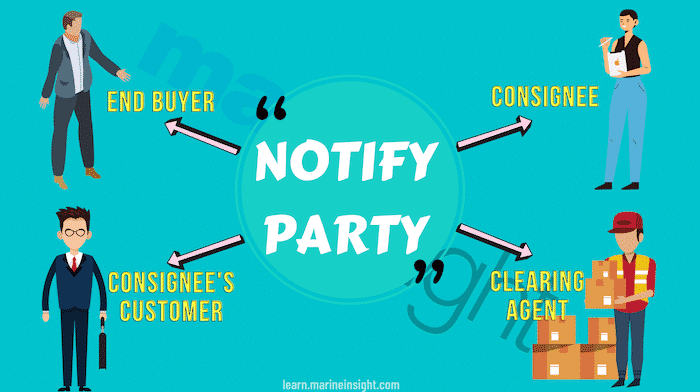
Generally, a bill of lading is a negotiable instrument. It means that they are contracts of carriage that can be transferred to another party. Being a negotiable instrument, bills of lading are issued ‘to the order of the consignee’.
However, for a bill of lading to be negotiable, it has to be a ‘clean bill of lading’. This means that the goods to be shipped are received by the carrier in good condition without damages or defects.
The ‘clean bill’ is issued by the carrier only after confirming this by inspection of the goods.
Upon inspection, if it is found that the goods received by the carrier have damages or defects a ‘foul bill of lading’ is issued. It is also referred to as a ‘claused bill of lading’ as the carrier includes a clause in the bill to denote the damages or defects.
There are non-negotiable bills of ladings too, such as a seaway bill.
A seaway bill has a fixed consignor and consignee. The ocean carrier is bound to deliver the goods covered under the seaway bill only to the consignee mentioned in it.
What is Consignment?
Typically, consignment is the arrangement where a third-party operator sells goods on behalf of the producer for a percentage of the profit generated from the sale.
Consignment business is ideal for online businesses that do not own storage spaces or warehouses. Other types of businesses also resort to this kind of arrangement.
The amount paid to the third-party operator by the producer of goods is usually a small percentage of his profit or an agreed fixed amount.
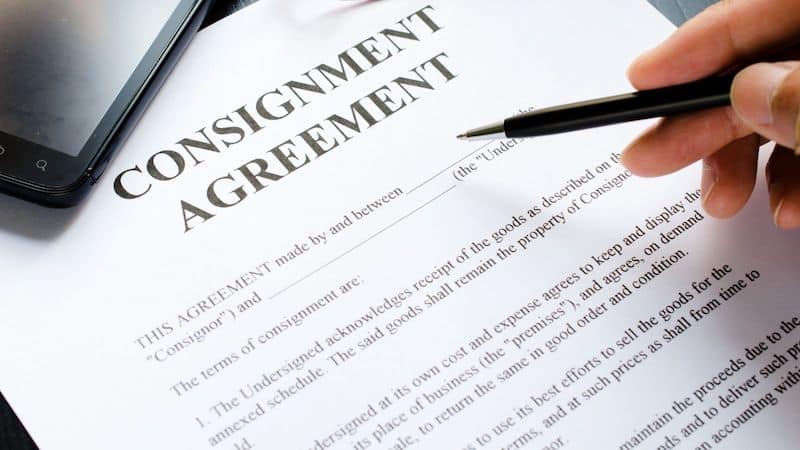
Consignor and Consignee in Trading
In a very broad sense, trade is a contract between parties where the seller transfers goods to the buyer for a monetary consideration. There are two main parties to a trade contract which are the seller and the buyer.
In trade, there are actually two contracts – the contract of sale and the contract of carriage.
In the former, the one who sells the goods is referred to as the seller and the one buying it is the buyer or customer. A contract of sale will have details such as the amount to be paid, terms of payment, etc.
In the latter, the seller is known as the consignor while the buyer is known as the consignee. A consignee may be the same as a buyer or customer, but it need not be so in all cases.
Normally, the consignee makes the payment for the goods that are shipped and is entitled to clear and receive the cargo.
A contract of carriage will show the arrangements that have been agreed upon to transfer goods from one point to another.
Duties of a Consignor
The consignor has to fulfil his duties for the timely receipt of the cargo by the consignee. They are:
Picking of the Goods as per Customer Order
The goods meant for shipping have to be picked accurately from their storage areas and kept separately for packing and labelling, by the consignor.
Packing and Labeling – Handling Instructions, Hazardous Goods, etc.
This involves packing the goods in appropriate cartons or enclosures, affixing the correct labels on them with all the required details such as the description of goods, type of goods, harmonized codes, whether dangerous goods, etc.
The consignor sometimes out-sources the tasks of packing and labelling to a third-party.
Documentation – Including Certificate of Origin, Health Certificates, or Any Other Certificates as Required
Certificates such as the certificate of origin, health certificates, etc. may be required for the clearance of goods at the destination. The exporting country’s Chamber of Commerce or an authorized body issues the certificate of origin.
If the goods being exported are food items, it may require a health certificate from the relevant authority. This may be obtained from the authorized government health department prior to export.
Arrangement of Labor and Transport of Goods to the Port
The consignor has to arrange transport of goods from his premises to the port for shipping. This may involve labourers and equipment required for loading, unloading, etc.
If the consignor has warehouse staff and the necessary equipment for loading and unloading, the task of transport and delivery to the carrier is handled in-house. In the absence of this, the consignor may entrust this job to a third-party.
When the consignor or shipper handles the inland loading, unloading, and transport it is called merchant haulage. If the trade agreement is otherwise, the haulage is handled by the ocean carrier’s transport agent.
This would include customs clearance at the destination port, loading, transport, and unloading. Inland transport and labour arranged by the carrier is referred to as carrier haulage.
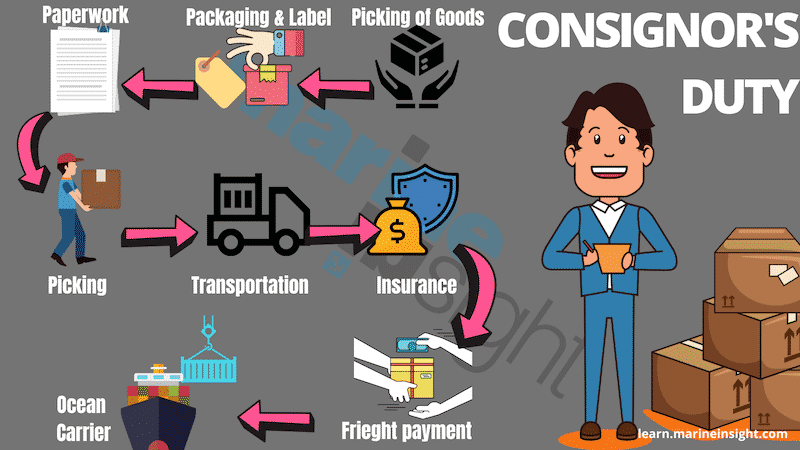
Insurance – as Agreed with Customer
When the agreed Incoterm® is CIF, the consignor has to arrange insurance cover for the cargo. CIF stands for Cost, Insurance, and Freight. In this case, the cost of goods to the customer from the seller includes these three costs. If Incoterm® is C&F (also referred to as CNF or CFR), the insurance is arranged by the customer or consignee.
Payment of All Freight Dues
The consignor has to settle all his dues relating to the shipment before the sailing of the vessel. Based on long-standing relationships or terms of the agreement between the consignor and shipping company the payment may also be settled at a later point in time.
Collation of Shipping Documentation
In a conventional shipping arrangement, the consignor collects the shipping bill and the bill of lading (or their copies) from the carrier and along with the customer invoice, packing list, and other certificates, sends it to the consignee. The consignee requires all these documents for the clearance of goods after payment of customs duties and taxes.
What is a Shipping Bill?
It is a document showing the list of goods to be exported, their value, destination or consignee address, and date of export. This document is required by the carrier to accept the goods for shipment. A shipping bill is issued by the consignor and endorsed by the department of customs.
On the other hand, a bill of lading is a document issued by the shipping company as proof of receipt of the consignor’s cargo on board the ship. A bill of lading is a title to the goods shipped.
Role of a Consignee
The role of a consignee in trade is to collect the goods from the ocean carrier. Depending on whether the agreed Incoterms® are DDU or DDP, the consignee may or may not have to pay customs duties and taxes and arrange for transport to his storage facility.
In the case of damages, short-stocks, etc. a claim has to be raised with the concerned insurance company after getting the damages, short-stocks, etc. certified by the port customs authorities.
Effective communication between the consignor, the ocean carrier, the consignee, the notify party (if any), the insurance company, and the bank (if payment is through a letter of credit) is necessary to complete any shipping transaction successfully.
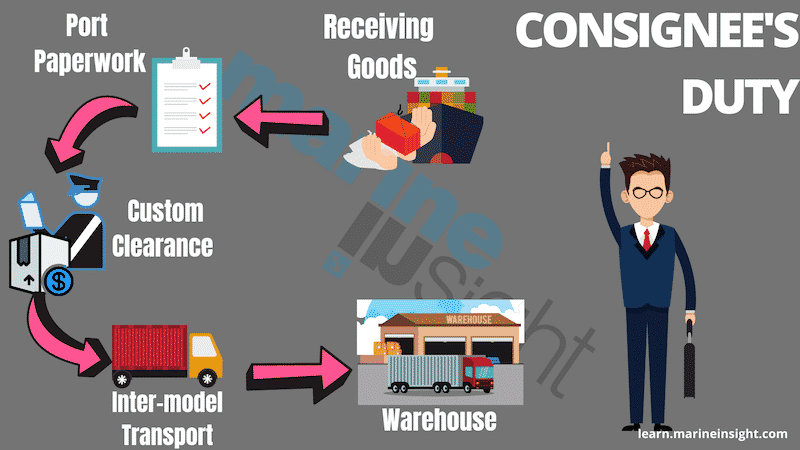
Delivery Duty Unpaid (DDU)
When the terms of trade agreed between the consignor and consignee is DDU, the goods are shipped for delivery to the consignee at the port of discharge without payment of customs duties or taxes.
Recently, the Incoterm® DDU was replaced with the term DAP (Delivered at Place) by the International Chamber of Commerce (ICC).
In DAP, it is the seller’s responsibility for the carriage and delivery of goods to an agreed location. Once the goods reach this location, it has to be unloaded by the buyer after payment of all customs duties and taxes.
Delivery Duty Paid (DDP)
Delivery Duty Paid is the Incoterm® used when goods that are shipped are cleared and handed over to the consignee after payment of all customs duties and taxes by the consignor. The consignor will normally have his agent at the port of discharge to complete these responsibilities.
Incoterms®
Incoterms® are the terms published by the International Chamber of Commerce periodically to standardize the different terms and for the ease in preparation of shipping and business documents and doing business on a global level.
Letter of Credit
A letter of credit is a guarantee issued by the buyer’s bank to the seller’s, promising to pay an amount in case of any default in payment by the buyer.
Are All Consignors Sellers?
All consignors need not be sellers of goods. A seller may contract a third party to arrange for the packing and transportation of goods. In this case, the third-party will be the consignor and the shipping bill will show accordingly. The customer’s dealing will be with the seller. However, all these conditions will have to be agreed upon before affecting the contract of sale between the buyer and seller.
Are All Consignees Buyers?
The answer to this is Yes – all consignees are buyers. Either such a consignee has entered into a contract with a seller or the original consignee would have transferred his right to ownership of the goods shipped, to the new party who becomes the rightful owner of goods.
Is Notify Party and Consignee the Same?
The consignee may be the Notify party or it could be a third-party who has been entrusted with the job of clearing and transporting the shipped goods to the consignee.
The field of Notify party in a bill of lading may be left blank or filled with the consignee’s name and address in which case, both are the same.
When the Notify party is a third-party, this party’s name and address will be shown on the bill of lading. The shipping company follows instructions from the consignor in this matter.
With increasing global trade and different methods of doing business, both the consignor and consignee have to fulfil their respective roles and responsibilities in a timely manner for the successful execution of any business transaction.
You might also like to read:
- What is ETD and ETA in Shipping?
- What is Demurrage and Detention in Shipping?
- Freight Forwarding Process – Everything You Wanted to Know
- NOTIFY PARTY in Shipping – Everything You Wanted To Know
- Guide To Types of Warehouses for Shipping
Disclaimer :
The information contained in this website is for general information purposes only. While we endeavour to keep the information up to date and correct, we make no representations or warranties of any kind, express or implied, about the completeness, accuracy, reliability, suitability or availability with respect to the website or the information, products, services, or related graphics contained on the website for any purpose. Any reliance you place on such information is therefore strictly at your own risk.
In no event will we be liable for any loss or damage including without limitation, indirect or consequential loss or damage, or any loss or damage whatsoever arising from loss of data or profits arising out of, or in connection with, the use of this website.
Disclaimer :
The information contained in this website is for general information purposes only. While we endeavour to keep the information up to date and correct, we make no representations or warranties of any kind, express or implied, about the completeness, accuracy, reliability, suitability or availability with respect to the website or the information, products, services, or related graphics contained on the website for any purpose. Any reliance you place on such information is therefore strictly at your own risk.
Do you have info to share with us ? Suggest a correction
Related Articles
Subscribe To Our Daily Newsletter
By subscribing, you agree to our Privacy Policy and may receive occasional deal communications; you can unsubscribe anytime.













BE THE FIRST TO COMMENT